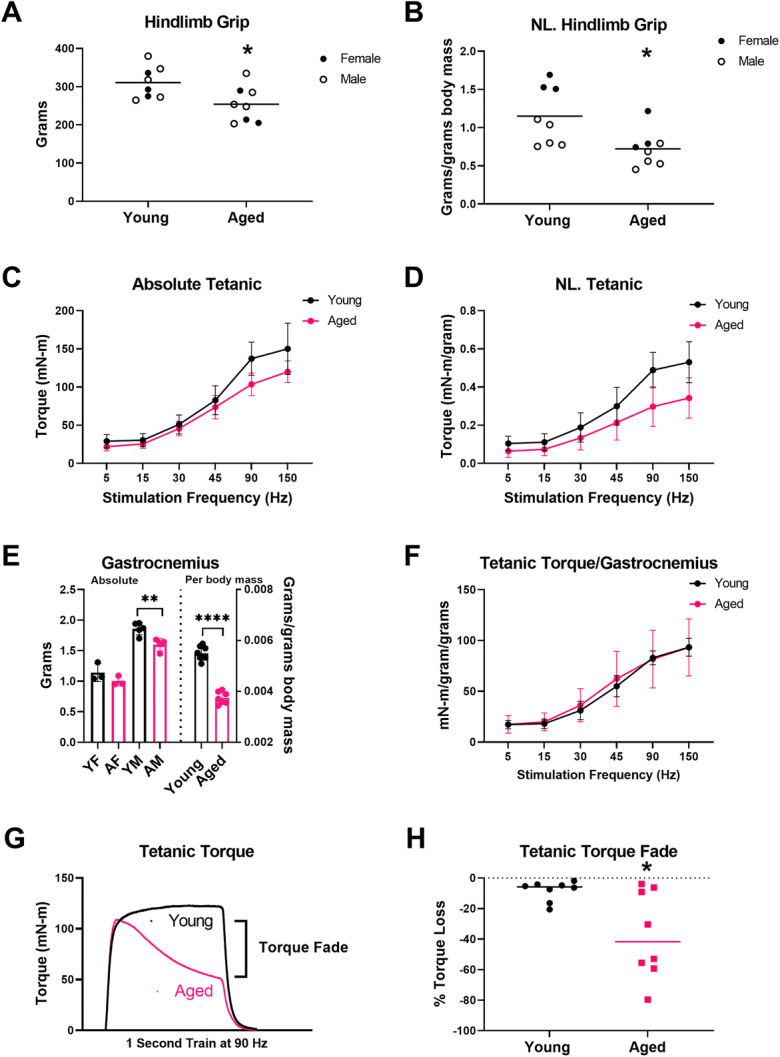Fig. 2.

Hindlimb grip strength, plantarflexion muscle contractility, and muscle mass in aged rats. Absolute hindlimb (a) and normalized hindlimb (b) showed reduced muscle strength in aged rats (p=0.0228 and p=0.0168, respectively). Grip: young rats, n=8 (3 females, 5 males), and aged rats, n=8 (3 females, 5 males) (females filled circles, males empty circles). c During stimulation at 5, 15, 30, 45, 90, and 150 Hz, absolute plantar flexion torque was lower in aged rats compared to young rats (stimulation rate p<0.0001, age p=0.0260, and stimulation rate × age p=0.0004). d Similarly, plantar flexion torque normalized to body mass was lower in aged rats (stimulation rate p<0.0001, age p=0.0135, and stimulation rate × age: p<0.0001). e Right: Absolute gastrocnemius muscle mass was not significantly reduced in aged female (AF) versus young female (YF) rats (unpaired t-test, p=0.2209, young females n=3, aged females n=3) but was significantly reduced in aged male (AM) rats compared with young males (YM) (t-test, p=0.0061, young males n=5 and aged males n=4). e Left: Gastrocnemius mass normalized to body mass was significantly reduced in aged versus young rats (t-test, p<0.0001). Muscle weights: young rats, n=8 (3 females, 5 males), and aged rats, n=8 (3 females, 4 males). f Plantarflexion contractility normalized to gastrocnemius mass demonstrated no difference between young and aged rats (stimulation rate p<0.0001, age p=0.0.1018, and stimulation rate × age p=0.2054). g Representative superimposed tetanic torque tracings during a 1-s train of stimuli at 90 Hz from an aged and a young rat, showing loss of torque (fade) in an aged rat versus stable torque production in the young rat. h Aged rats demonstrated significantly greater fade of torque production during a 1-s train of tetanic stimulations at 90 Hz (Mann-Whitney, p=0.0499). * p<0.05, ** p<0.01, **** p<0.0001
